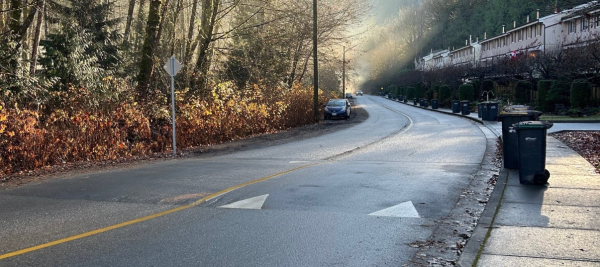
The District of Squamish is stepping up efforts to reduce vehicle speeds and improve safety on local streets, according to a City news release. Traffic calming measures, including speed humps, curb extensions, raised intersections, and pedestrian crossings, are being considered in residential areas to protect pedestrians, cyclists, and drivers alike.
According to the District, traffic calming is designed to balance traffic flow with community safety while addressing local concerns. “Traffic calming is about creating streets where everyone can travel safely, whether walking, cycling, or driving,” the release stated.
In March 2025, Council endorsed the Traffic Calming Policy to supplement and undertake traffic calming requests received from members of the community.
Residents can request traffic calming measures through the District’s official program. Requests are evaluated based on vehicle speed, traffic volume, collision history, and neighbourhood feedback. Priority is given to streets where high speeds or safety concerns pose the greatest risk, the city said.
The program is divided into two streams based on the District’s Street Classification map: District-led traffic calming on major collector roads and Resident-led traffic calming on local and minor collector roads.
Major collector roads are intended for through traffic and emergency vehicle access, so traditional traffic calming measures such as speed humps or traffic diversions are generally not suitable. The District may use alternative approaches, such as narrowing travel lanes and coordinating with other road capital projects, to improve efficiency.
Local and minor collector roads primarily serve residential neighbourhoods and small commercial areas. They are designed for lower speed limits and focus on providing direct access to homes, schools, parks, and local businesses. These streets generally have less traffic than major collectors, making them better suited for resident-led traffic calming measures.
The District is encouraging residents to report problem areas and provide feedback during planning stages. Officials say community input helps ensure traffic calming projects reflect local needs and priorities. Once prioritized, the top 3-5 projects will be costed, and an implementation schedule will be determined based on budget availability.










Get rid of the useless 4 way stops and traffic lights and replace with roundabouts.
It ensures traffic slows down and saves tons of costs on maintenance of lights not to mention reduces accidents!!